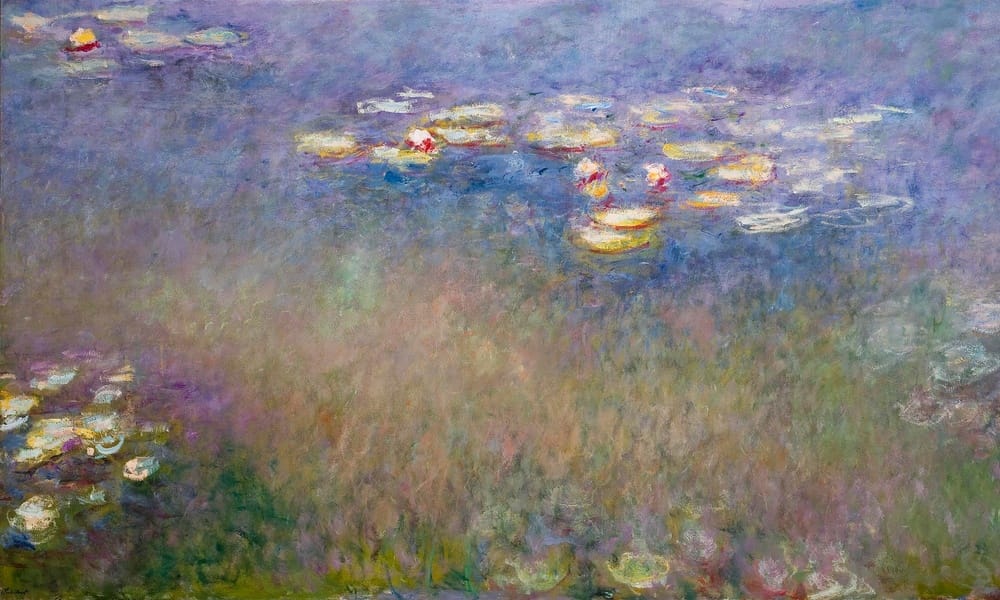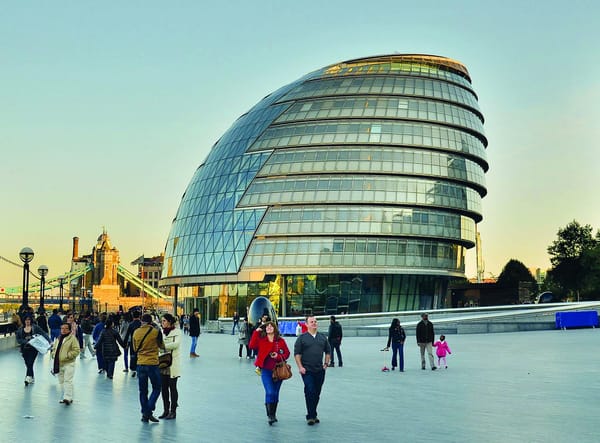A vibrant tour of 20th century blossoms
The Royal Academy’s colourful exhibition brings together gardens of all times and styles

To walk into Painting the Modern Garden: Monet to Matisse at The Royal Academy is to plunge into a world of exuberant greenery, of sun-dappled paths, manicured lawns, a land where it is always spring, and Paris is always in bloom.
“Perhaps I owe it to flowers” Monet once said, “that I became a painter”. Within the exhibition amongst the best of Monet’s work, it is easy to see how Monet’s unique painting style, from his brushstrokes to use of colour was informed by his love of gardening. Only quick frenetic flashes of colour could do justice to the sheer mass of leaves and petals, and the light filtering through them that Monet painted.
It is undoubtedly Monet’s show. No exhibition on gardens could be complete without Waterlilies or Japanese Footbridge, but the strength of the curation lies in the fact that the other artists featured give Monet a run for his money.
One of the standout works of the earlier galleries is Frédéric Bazille’s The Terrace at Méric; it is an unfinished work, but almost better for it. A ghostly figure of a woman carries in a bench, melting in and out of the shadows. In the background the sunlit path has all the solidity that the figure doesn’t. Broad peach strokes clash against the burnt umber of the shade to create the bright heat of a Turkish summer.
Gustave Caillebotte’s Nasurtium, painted in 1880, is one of the few paintings in the earlier galleries that feels genuinely revolutionary. Tiny sparks of scarlet flowers, engulfed by verdant leaves on fragile stems are sown without context on a lilac-mauve ground, it provides a bridge between the realism of the past and the abstractism that would follow. This technique is later amplified by Monet in Chrysanthemums, an extreme close up transforms the flowers into exploding fireworks.
It is the kind of sumptuous imagery that would not look out of place in a big budget movie
Although the usual suspects are Renoir, Pissaro and Cézanne, there are also works by Gauguin, Gabriele Münter and Paul Klee. It isn’t all bourgeois rural gardens replete with creamy pinks and soft blues either. In Garden Study of the Vickers Children, huge ghostly lilies hover over the children with subtle menace. Edvard Munch’s Apple Tree in the Garden, an homage to the biblical allegory depicted in medieval paintings of gardens, is full of lurid lemon yellows, ultramarines and sea greens, which clash against each other evoking the sinister vein that runs through all of Munch’s paintings.
Santiago Rusiñol conjures up a fading grandeur in his painting of Spanish gardens. In Gardens of Monteforte, the golden light from the setting sun falls through windows cut in hedges and gilds an ornamental pond. The fiery oranges are reflected in the autumnal trees in the distance. It is the kind of sumptuous imagery that would not look out of place in a big budget movie.
Elsewhere, coming across Kandinsky’s Murnau Garden II is a revelation. Stylistically, it is so far removed from the paintings that surround it, that it is thrown into sharp relief, akin to having icy water splashed in your face (in the best way possible). Even from the far end of the gallery it is impossible to look away from the splodges of mid yellow, cerulean, and scarlet.
The Royal Academy rightly devotes much of the final gallery space to Monet. These last paintings form the last canvases of his life, spanning the years of the First World War, and the aftermath of the destruction it wreaked. Though Monet never varies from his subject matter, still iterating the waterlilies and Japanese footbridge in his garden in Giverny, the war encroaches onto his work.
Monet’s personal grief is palpable
As German troops approached Paris, his brushstrokes become more frenetic, he loads paint more thickly, uses bolder, darker colours. Gone is the pastel prettiness from his earlier depictions of the footbridge, instead it is engulfed in flame like brush strokes, lime green, hot orange, emerald yellow ochre. Some parts of the canvas are left unpainted, other parts are built up in richly textured impasto, almost Braille like, globs of paint that dissolve into sculpture the closer you get.
Monet’s personal grief is palpable; his stepson was drafted as was his son. Though Monet is known painting en plein air, in the later years, when he painted on large scale canvases, he worked mainly in studios from sketches made outdoors. Monet was never a simple transcriber of nature, but further degrees of separation of the source material combined with his failing eyesight may have influenced the evolution of his style towards the abstract.
The uncontested highlight of this exhibition is the final gallery which houses Monet’s Agapanthus triptych, reunited for the first time in Europe. The canvases are vast, panoramic, and if you stand in just the right place it is possible to fill your entire field of vision with it. Lilacs dissolve into greens, into blue, broad flat strokes of white suggest lily pads. It is at the zenith of his exploration of colour over form, the fluidity of the strokes mirror the fluidity of the water, the wavering of the reflections. In the piece’s diffuse light, it is impossible to stand in front of these paintings and not be in awe.
Painting a Modern Garden is a whistlestop tour of early 20th century art, charting the evolution of Impressionism to Post-Impressionism to the avant garde movement. It would have been easy for the pieces to feel too disparate, but thematically it is cohesive enough to rise above the difference in style. It is a shame that Van Gogh who spent much of his life painting gardens is not more heavily featured, but no one would begrudge the curators their enthusiasm for Monet. If you go to one exhibition this year, it should be this one.
Painting the Modern Garden: Monet to Matisse At the Royal Academy until 20th April







